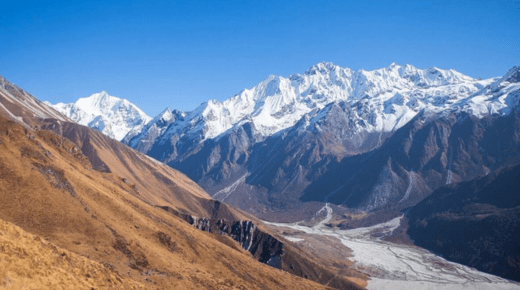The Langtang Valley Trek is an enchanting adventure that offers a unique blend of natural beauty, cultural immersion, and Himalayan grandeur. Located in the Langtang National Park in Nepal, this trek is renowned for its stunning landscapes, diverse ecosystems, and close-knit local communities. Ideal for trekkers seeking an off-the-beaten-path experience, the Langtang Valley Trek provides a rewarding journey through one of Nepal’s most captivating regions.
Overview of the Langtang Valley Trek
The Langtang Valley Trek typically spans around 10 to 12 days, beginning from Kathmandu and extending into the heart of the Langtang Valley. The trek starts with a drive to Syabrubesi, followed by a trek through lush forests, terraced fields, and traditional villages. The journey culminates at the stunning Langtang Valley, where trekkers are treated to breathtaking views of the surrounding Himalayan peaks and glaciers.
Key Highlights of the Trek
- Stunning Scenery: The Langtang Valley Trek is renowned for its spectacular mountain vistas and diverse landscapes. Trekkers are treated to views of towering peaks such as Langtang Lirung, Ganesh Himal, and Dorje Lakpa. The trek also passes through scenic meadows, lush forests, and alpine landscapes, providing a visual feast of natural beauty.
- Rich Cultural Experience: The trek offers an opportunity to experience the culture and traditions of the local Tamang and Sherpa communities. Villages like Langtang and Kyanjin Gompa provide insights into the local way of life, including traditional architecture, customs, and festivals. The trek also includes visits to ancient monasteries and gompas, enriching the cultural experience.
- Biodiversity: The Langtang Valley is home to a rich array of flora and fauna. The trek passes through various ecosystems, from subtropical forests to alpine meadows. Trekkers may encounter wildlife such as red pandas, Himalayan tahr, and various bird species. The diverse plant life includes rhododendrons, pines, and medicinal herbs, adding to the trek’s natural charm.
- Adventure and Challenge: The trek involves moderate to challenging trekking, with significant altitude gains and varied terrain. Trekkers will navigate through rocky paths, steep ascents, and high-altitude environments. Proper acclimatization is essential to prevent altitude sickness and ensure a safe and enjoyable trek.
- Kyanjin Gompa: One of the highlights of the trek is reaching Kyanjin Gompa, a high-altitude village situated at 3,730 meters (12,236 feet). Kyanjin Gompa offers stunning views of the Langtang range and serves as a base for exploring the surrounding area. Trekkers can visit the Kyanjin Monastery and hike to viewpoints such as Tserko Ri for panoramic vistas.

Best Time to Trek
The best times to undertake the Langtang Valley Trek are during the pre-monsoon spring (March to May) and post-monsoon autumn (September to November). These periods offer clear skies, stable weather conditions, and optimal trekking conditions. Winter treks are possible but can be challenging due to snow and cold temperatures, while the monsoon season (June to August) brings heavy rain and increased risk of landslides.
Preparation and Tips
Proper preparation is crucial for a successful trek. Ensure you have appropriate trekking gear, including warm layers, sturdy boots, and rain protection. Engaging in pre-trek fitness training and consulting with a trekking expert can help in planning the best itinerary and ensuring proper acclimatization.
Conclusion
The Langtang Valley Trek is a captivating adventure that offers a blend of natural beauty, cultural richness, and Himalayan grandeur. With its stunning mountain views, diverse ecosystems, and authentic cultural experiences, this trek provides a memorable journey through one of Nepal’s hidden gems. Whether you’re drawn by the scenic landscapes or the chance to immerse yourself in local traditions, the Langtang Valley Trek promises an unforgettable exploration of Nepal’s captivating wilderness.

